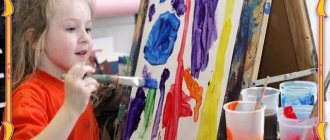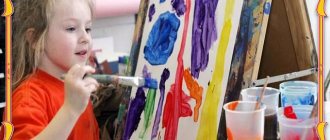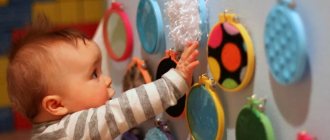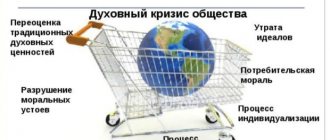Tasks and goals of labor education of preschool children
The labor education of children begins from preschool age, when children copy adults and imitate them with great desire. The main thing is not to miss this moment, to encourage any desire of the child, and also to interest him for further activities. The main goal of labor education of a preschooler is the formation of a reverent attitude towards work, as well as an understanding of adult work.
Main tasks of labor education:
- Show the child how important work is in life, form a correct idea of the work of adults
- Teach the necessary skills for work
- Develop a caring attitude towards work
- Tasks that help develop qualities such as responsibility, hard work, caring
The importance of work for personal development
Many mothers and fathers underestimate child labor, explaining this by the fact that their child will still have time to work at an older age. However, as is already known, labor skills begin to develop from an early age.
Labor activity contributes to the development of endurance, patience, responsibility, willpower, and also develops the child’s independence and desire to achieve certain goals and objectives.
The preschooler begins to realize that work, in addition to joy, can also bring quite a few troubles associated with complex, tedious and boring work.
By helping parents with everyday matters (washing the floor, washing dishes), the child learns to understand that if such work is not done very efficiently and accurately, then it is unlikely that anyone will like it. By running errands for adults, the baby shows love for loved ones.
If you ask a child to fix a toy, this does not mean that you need to resort to any specific mechanical actions. Such work forms the development of initiative, memory, imagination, the child strives to find a way to solve the problem. Also, working with small parts, the child develops fine motor skills, which in turn is very useful for speech and intelligence.
Forms and types of labor education
Labor education of preschool children in the family helps in physical and moral development. By mastering work skills, children begin to become more confident. Work develops a sense of discipline.
The types of work activities depend on the goals and objectives of the work. By watching adults, children learn work and certain abilities.
Types of labor education
Self-service
This skill must be developed in a child from an early age. But due to the characteristics of a small organism, babies are not yet able to perform various actions: their fingers do not obey, the sequence of actions is not remembered, the inability to control their own will. During this period, adults need to be patient and calm, and be supportive of the baby. This is the only way to get a positive reaction from the child to perform such actions as brushing his own teeth, getting dressed, making the bed, putting away toys.
In order for your child to quickly master self-care skills, you need to:
- Perform these actions constantly
- Monitor the execution of work processes
- Teach your child neatness, cleanliness, neatness
As you get older, add new self-care responsibilities. For example, for a primary school student, work together to prepare school clothes for tomorrow, then allow the child to do it independently, controlling the process.
Household labor
Preschool children need to acquire economic skills. You can entrust your child with simple tasks such as wiping dust, tables, and cleaning toys. In kindergarten, similar work methods apply: while on duty, children set the table, take care of the plants, and wipe the shelves. For every action of the child, it is necessary to praise and encourage him, even if the result of the work performed is not entirely satisfactory. Adults control all actions and, if necessary, correct the child, thereby showing how to properly perform this or that work. It is forbidden to scold children; this is the only way to achieve the goal of labor education.
Labor in nature
Developing working abilities in nature is a great way to experience all the splendor and beauty of the environment, develop skills such as observation and learn to hone your actions. The goal of this type of education is to develop endurance and strong-willed qualities.
Children can be entrusted with feeding birds, fish, and caring for flowers. If the group has a living area, then kids can take care of the animals. At home, children can be assigned the same responsibilities. Another interesting way is to grow greens on the windowsill (onions, dill, parsley). Kids will enjoy watching the growth of such plants and caring for them.
Manual labor
Manual labor means working with your hands. Preschool children make crafts using various materials. Manual labor contributes to the development of such qualities as patience, perseverance, and aesthetic taste. Here, as in any other type of work activity, it is important for the child to receive praise from adults in order to maintain interest in this activity.
Forms of labor education
There are three main forms of labor education:
- Errands. These are individual tasks that are assigned to the child by parents or kindergarten teachers. Here the characteristics of the baby and his experience are taken into account. By completing tasks, the child develops a sense of responsibility.
- Duty roster. This form of work activity is aimed at ensuring that the child completes tasks to serve the team (for example, setting the table). This teaches the child to care about others and to be responsible to the team.
- Teamwork. This form of work is more typical for older children: adults give a general task that must be completed within a certain period of time. Children learn to work in a team and negotiate.
Labor education of preschool children: meaning, tasks, types of work activity
Ekaterina Borisovna Bannova
Labor education of preschool children: meaning, tasks, types of work activity
Content
Introduction…. 2
1. The concept and significance of labor education for preschool children... . 3
2. Tasks of labor education.... 3
3. Types of work activities of preschool children.... …. …4
4. Conclusion….…. …9
5. List of used literature….…. 10
6. Application…. …eleven
Introduction
The work of children in kindergarten is varied. This allows them to maintain their interest in activities and provide them with comprehensive education and upbringing .
Labor education is one of the most important aspects of raising the younger generation. In kindergarten, labor education consists of familiarizing children with the work of adults , introducing children to the work activities available to them . In the process of familiarizing themselves with the work of adults, the teacher forms in children a positive attitude towards their work , a caring attitude towards its results, and a desire to provide adults with all possible help.
Labor is a purposeful human activity aimed at modifying and adapting natural objects to satisfy one’s needs.
K. attached great . D. Ushinsky - “ Education should not only develop the mind, equip it with knowledge, but also ignite in a person a thirst for serious work... ”
great importance to work . S. Makarenko, N. K. Krupskaya, V. A. Sukhomlinsky. Throughout the development of preschool education, much attention was paid to the problem of labor education of preschoolers:
- it was considered important and obligatory to introduce self-service work , work in the garden and in the garden, manual labor with various materials.
tasks were identified :
- learn to work with joy ;
- teach to work efficiently.
Since 1964, systematic in-depth studies of the problem of labor education : V. G. Nechaeva, G. N. Godina, D. V. Sergeeva, R. S. Bure, A. D. Shatova and others. Their studies answered the question about content, means, methods and forms of labor organization and its role in educating the personality of a child of childhood .
The study of pedagogical literature has shown that the formation of a positive attitude towards work in preschoolers is influenced by various factors: the formation of knowledge and ideas about the work of adults and its social significance , the development of labor , the acquisition of skills and abilities, the creation of a highly emotional atmosphere, methods and techniques of pedagogical influence.
1. The concept and significance of labor education for preschool children .
Labor is a powerful educator in the pedagogical education
A. S. Makarenko. The basis is precisely work . But what labor is is not at all what the hands of a child or teenager are occupied with. Labor is what develops a little person, supports him, helps him assert himself.
Hard work and the ability to work are not given by nature, but are cultivated from early childhood. Work must be creative, because it is creative work that makes a person rich spiritually.
Work stretches a person physically. And finally, work should bring joy, happiness and prosperity. We can also say that work is the manifestation of people about each other.
Labor education is a joint activity of the teacher and pupils , aimed at developing general labor skills and abilities, psychological readiness for work , the formation of a responsible attitude towards work and its products , and a conscious choice of profession.
2. Objectives of labor education.
Preschool pedagogy identifies the following main tasks of children's labor education : familiarization with the work of adults and instilling respect for it ; training in simple labor skills ; nurturing interest in work , hard work and independence ; education of socially oriented motives for work , skills to work in a team and for a team.
In kindergarten, in the family, in the public environment accessible to him - everywhere the child encounters the work of adults and takes advantage of its results. children’s attention is attracted only by external aspects: the process of labor actions , the movement of mechanisms and machines. Consistently familiarizing children with the work of adults in their immediate environment, and then outside the kindergarten, allows them to form an idea of the essence and significance of labor actions , to explain, using specific examples, the attitude of adults to work and its social significance .
The knowledge of preschoolers about the work of adults should have a great influence on the formation of their correct attitude towards work , however, it can remain formal if familiarization with work activities is not combined with the work of the children themselves .
" Kindergarten education "
reveals the scope
of labor skills and abilities that children of each age group . So, for example, when developing in younger preschoolers the skills and abilities of household work , the teacher teaches them to wipe toys with a damp cloth, rinse clothes, etc. In the middle group, children rinse and wring out the cloth used to wipe toys, soap doll clothes, and wash them. . Older preschoolers wash toys with a sponge and soap, wash small items, prepare the necessary equipment for classes, work , games, and then put it in order.
When determining the content and sequence of teaching children labor skills , the educator must take into account the characteristics of their age , the availability of the proposed labor , its educational value , as well as the sanitary and hygienic requirements for its organization.
In the course of teaching labor skills, the teacher creates in children the desire to do independently everything that they can do, coming to help whenever they need it. Preschoolers should not be allowed to experience disappointment from unsuccessful attempts to independently cope with the proposed task, since in these cases, self-doubt and reluctance to work .
It is necessary to remember that work should bring children joy: from the results achieved, from their usefulness to others.
In kindergarten, the task of developing in children the ability to work in a team . This happens gradually, by uniting children in the process of work into small groups with a common task (if they already have experience working together, then a group of 6-7 participants can perform task In the process of such work, the teacher forms in children the idea of shared responsibility for the assigned task, the ability to act independently and in a coordinated manner, to distribute work among themselves, coming to each other’s aid and striving to achieve results through joint efforts. All this enriches their experience of relationships in activities and gives them a positive character.
3. Types of work activities of preschool children.
There are four main types of child labor : self-care, domestic labor , outdoor labor and manual labor . The share of certain types of labor at different age stages is not the same . Each of them has certain capabilities for solving educational problems .
Self-care is aimed at caring for oneself (washing, undressing, dressing, making the bed, preparing the workplace, etc.). The educational significance of this type of work activity lies primarily in its vital necessity. Due to the daily repetition of actions, self-service skills are firmly acquired by children; self-care begins to be recognized as a responsibility.
In early preschool age , self-care is associated with certain difficulties (insufficient development of finger muscles, difficulty in mastering the sequence of actions, inability to plan them, easy distractibility, which slows down the process of developing skills, sometimes causing the child to be reluctant to perform the necessary actions. However, already in these children the teacher begins to develop the ability to serve oneself, achieving accuracy and thoroughness in performing the necessary actions, independence, forms the habit of cleanliness and neatness. All this requires patience, perseverance and goodwill, supporting the kids in their sometimes futile efforts. Guiding the self-service of children , the teacher communicates individually with each child , establishes various contacts with him, maintains his positive emotional state. By naming items of clothing and its parts, necessary actions, he expands the children's ... They feel cared for, imbued with a feeling of love and trust in the adults serving them.
In middle preschool age, children are quite independent in self-care, and this type of work becomes their constant responsibility. The complication of educational tasks is expressed in increased requirements for the quality of actions, for organized behavior in the process of self-care, and for the time spent on this. The teacher develops techniques for mutual assistance in children , teaches them how to ask a friend for help, how to provide it, and thank them for the service.
In older preschool age, new self-care skills are acquired: making the bed, caring for hair and shoes. The processes associated with it are used to solve more complex educational problems : developing in children the habit of neatness and cleanliness, and behavioral skills when surrounded by peers. The child serves himself while being around others, and therefore he must understand the needs and difficulties of others . The teacher, using specific examples, explains how to act, taking into account the needs of others: step aside in the dressing room to allow someone who has already undressed to pass; when washing, let those on duty go ahead (it is more important for them to wash as quickly as possible in order to begin their duties, not to linger at the tap so that everyone washes on time, to ask permission to pass so as not to cause inconvenience to anyone, etc. All this forms an elementary courtesy, respect for others.
Household work of preschoolers are not so noticeable in comparison with other types of their . This work is aimed at maintaining cleanliness and order in the premises and area, and at helping adults organize routine processes. Children learn to notice any disturbance of order in a group room or area and, on their own initiative, eliminate it. Household work is aimed at serving the team and therefore contains great opportunities for developing a caring attitude towards peers. In early preschool age, the teacher develops basic household skills in children: helping to set the table, tidying up toys after playing and washing them, collecting leaves on the site, sweeping snow from benches, etc. He necessarily evaluates the moral side of labor participation children : “Natasha and Seryozha helped our nanny well, what great guys!”, “Irochka is a caring girl, neat, how diligently she put away her toys!” Such assessments make children want to imitate their peers and contribute to the formation of ideas about how to act in such cases.
In the middle group, the content of household work expands significantly : children fully set the table, prepare everything necessary for classes, wash doll clothes, wipe dust off shelves, sweep paths in the area, etc.
Using their increased capabilities and taking into account the developed skills, the teacher accustoms children to the fact that in work it is necessary to make an effort, develops independence, active initiative in carrying out assigned tasks.
In the older groups of the kindergarten, household work is even more enriched in content and becomes systematic, largely turning into the permanent duties of those on duty. Children keep the room and area clean, repair toys and books, and provide assistance to children. The peculiarity of the household work of older preschoolers is the ability to organize it independently: select the necessary equipment, place it conveniently, put everything in order after work. In the process of work , children show diligence, a desire for a good result, and treat their peers kindly.
Labor in nature involves the participation of children in caring for plants and animals, growing plants in a corner of nature, in a vegetable garden, in a flower garden. This type of work of particular for the development of observation, nurturing a caring attitude towards all living things, and love for one’s native nature. It helps the teacher solve the problems children’s physical development , improving movements, increasing endurance, and developing the ability for physical effort.
In younger groups, children, with the help of adults, feed fish, water and wash indoor plants, plant bulbs, sow large seeds, take part in harvesting from their garden, and feed wintering birds. Supervising the work of the kids , the teacher names the plants , their parts, and the actions performed in the work ; this expands children's vocabulary and activates it.
In the middle group, work becomes more difficult . Children water the plants themselves, learn to determine the need for moisture, grow vegetables (sow seeds, water the beds, harvest, and with the help of the teacher prepare food for animals (squirrels, hamsters, rabbits, chickens)
.
The teacher explains what food a particular animal needs, what it is called and how to store it. The process of caring for animals is closely connected with observations of them. Children begin to realize the dependence of the growth and development of plants and animal behavior on the quality of care, and their responsibility for them. There is growing concern and attention to the inhabitants of the living corner, who become children's .
types of are planted in the garden , which makes the work more systematic.
labor is also increasing . Preschoolers spray plants with a spray bottle, sweep away dust from fuzzy leaves with a brush, and loosen the ground. With the help of the teacher, children feed the plants, recharge the aquarium, dig up the soil in the vegetable garden and flower garden, plant seedlings, collect seeds of wild plants (to feed wintering birds)
.
In the process of work, the teacher teaches children to observe the growth and development of plants, to note changes that occur, to distinguish plants by their characteristic features, leaves, and seeds.
This expands their understanding of the life of plants and animals and arouses keen interest in them. In the preparatory group, in the process of working in nature, children learn to establish connections between individual phenomena and discover patterns. The beginnings of a materialistic understanding of natural phenomena are being formed. Information about plants and animals and methods of caring for the inhabitants of a living area is expanding. independence in work matters : without being reminded, they determine the need for watering and loosening the soil, replanting plants, sowing seeds in the garden, in the flower garden, and in winter - in a corner of nature where onions and other greens are constantly grown. Children will learn techniques for propagating plants by cuttings, growing seedlings and then replanting them in the ground.
Children have increased responsibility for the condition of the vegetable garden and flower garden. Harvesting flowers gives them great joy. They give flowers to parents, treat the kids with grown vegetables, prepare vegetables for vinaigrette (wash them, peel them, take them to the kitchen, decorate the group room with flowers.
Manual labor - making objects from a variety of materials: cardboard, paper, wood, natural materials (cones, acorns, straw, bark, corn cobs, peach pits, waste material (reels, boxes)
using fur, feathers, scraps of fabric, etc. - carried out in older groups of kindergarten.
Children make the toys and attributes they need for games: boats, cars, baskets, houses, furniture, animals. Such crafts can be a pleasant gift for family and friends. This is of no small importance in moral education , teaching children to pay attention to others and to work hard in order to please them.
Manual labor children's constructive abilities , creativity, imagination, and invention. So, to make a funny fairy-tale man from natural material, the child selects a large acorn for the body, a cup from it for a skirt or hat, splits the acorn in half to make shoes, etc. Preschoolers look with interest at the natural material to choose a shape corresponding to the intended object: dragonfly wings are made from maple seeds, forester wings are made from a pine cone, etc. In the process of work, they become familiar with the properties of various materials, methods of processing and joining them, and learn to use various tools. The production of intended objects always involves the application of force. The child needs to show persistence, patience, and accuracy in order for the object to be durable and have a neat, elegant appearance.
All this has a great educational impact on children , shaping their aesthetic feelings and moral and volitional qualities.
4. Conclusion.
To cultivate hard work and improve children’s working abilities, the teacher needs to distribute work among everyone, provide conditions for its existence, monitor the children, and promptly direct their actions.
Children need to be given greater independence to perform work, but at the same time their actions must be controlled, increasing the requirements for the quality of the work performed.
The teacher needs to develop self-esteem in children so that they can compare their work results with the results of their peers.
It is also important to use works of art. With its emotionality, imagery, and liveliness, a children's book infects children with the enthusiasm of work : it awakens interest, respect for work , the desire to imitate the heroes of literary works, like them, to work .
In order for children to have a stable positive attitude towards everyday necessary work, it is important to create optimal conditions.
When developing basic skills in household work , you should think about its organization and the techniques that are used to teach children certain skills. Before distributing responsibilities between children, it is necessary to agree on who will do what work, and also teach the children some rules for distributing responsibilities.
Before tasks it is important :
• tell children about the benefits of work so that they can have an idea of how necessary and important work is;
• list to the children the entire scope of upcoming activities , for example: “You are all on duty today, we will clean our room, what needs to be done? You need to put things in order on the toy racks, wash the doll dishes, put building materials in boxes, etc.” During children's should be paid to coordinating the work of individual duty officers and helping children.
• highlight tasks that would become the content of the work of individual children . Discussing with the children what tasks still need to be done, in their opinion, so that “everything is in order”
, ask them the question of whether they will be able to complete this work in the allotted time, what tasks should be done first.
• pay attention to how children treat each other when distributing work among themselves, in what form they express their disagreement, whether they know how to correctly reprimand a friend, and prove the validity of their claims.
5. List of used literature.
1. T. S. Komarova, L. V. Kutsakova, L. Yu. Pavlova “ Labor education in kindergarten ”
2. Vasilyeva, M. A. “ Labor education ”
3. Kozlova, S. A. “Moral and labor education of preschool children ”
Methods and means of labor education
From an early age, children learn about the world around them, and the goal of parents is to help with this by teaching simple independent actions.
Labor education of young children is carried out using the following means:
- Own activities. With the help of this tool, kids learn and acquire certain skills, achieve goals and get results. They also develop hard work and discipline.
- Familiarization with the work of adults. This tool helps the child learn about the work activities of other people, about social significance, and forms the right attitude towards work.
- Artistic media. This includes various types of art: music, painting, etc. Of course, you cannot learn to work by listening to a fairy tale or music. However, this helps to interest the child. In most stories and fairy tales, the main characters are always hardworking, help those in need, and ultimately receive love and recognition. A child can experience emotions that make him want to be like someone who does work and is not afraid of work.
The main methods of labor education for preschool children include:
- Emotional mood method: use of musical works, discussion of work activities and results
- Verbal method: discussions, reasoning about the progress of work, methods of its implementation, evaluation
- Visualization method: the nuances of work are shown and demonstrated
- Practical tasks are work that is performed directly by the child himself.
Self-service.
Compliance with hygiene rules is the first and main work activity of children. Parents should unobtrusively, gradually teach children from an early age to pay attention to their appearance, to wash their hands first with the help of an adult, then on their own, before and after eating, upon returning from a walk, when soiled, etc.; dress and undress yourself, fold things correctly and put them away; eat food carefully and leisurely. These, at first glance, habitual actions cause a lot of difficulties in the child and a reluctance to do this, so it is important for parents to behave correctly - be patient and under no circumstances take on these responsibilities. If a child was raised correctly in previous years, then by the age of 4-5 he is almost completely independent in self-care. The presence of developed skills in children aged 6-7 years allows parents to increase their requirements for the quality and pace of self-service. Children should be able not only to quickly dress and undress, but also to notice shortcomings in their appearance and eliminate them.
Features of labor education in the family
- Parents must set a good example. If mom and dad are constantly arguing about who will go take out the trash or wash the dishes today, then it will be difficult to teach the baby to work hard.
- Labor education should begin from an early age. Typically, children do not like to clean up their toys. In this case, do it together. All toys should have their place: books on the shelf, soft toys in the basket
- If your child wants to do something on his own, don’t interfere. Even if the child didn’t wash the plate well or gets dressed too slowly. Be patient and also assign certain simple responsibilities to your baby.
- Praise your child for anything he does. It is very important for kids to understand that they are great. Parents' admiration is the best reward
- There is no need to force a child to work. The best option is joint work. Turn ordinary cleaning into a game, a competition
- Entrust your baby with regular responsibilities according to his age: feeding pets, caring for flowers. This way the child will understand that his work is very important in the family.
- The child needs to understand the result of his actions. Explain to him why he is doing this or that work: if you don’t feed the fish, they will die, and flowers will wither without water
- Some instructions may not be clear to the child, so adults need to show the child exactly how to do the work. It will probably take some time for the child to understand. Be patient and repeat as many times as necessary
- Monitor your baby. If a child does not do the job well, and the parents then finish it or redo it for him, then in the future the child will shirk from completing assignments, knowing that they will do everything for him anyway
Fostering hard work in young children
To achieve success in life, a person must be hardworking. Nature did not instill such a quality in us, so love for work must be developed. The main task of labor education for preschoolers is to teach hard work and to be responsible for the task being performed.
Labor education of children of primary preschool age begins with self-service, or carrying out simple instructions from parents in everyday life. Older children perform educational and social work. The sooner parents begin to introduce their children to household work, the easier it will be for them to cope with their work responsibilities in the future.
Each child, like any person, has his own specific interests in certain activities. And if you do not pay attention to such interest and desire of the baby, and do not engage in further development, then this interest may disappear altogether. It is important for mom and dad to support the child, as well as add something new that will help develop hard work. Combine business with pleasure in the form of play, and your child’s work will be easy; he will be interested in helping not only himself, but also those around him.
Kids love to imitate adults, it’s important not to miss this moment. Let your baby help you with simple family tasks: putting toys away, wiping the table, washing a cup, and so on. Allow your child to be independent, especially if he wants it himself.
Don't forget about rest, a little person needs it. In between work activities, allow your child to do what he likes.
Labor education of girls
Girls need to be involved in household work: taught to clean the house, do laundry, cook simple meals, and set the table. Such activities should be unobtrusive and properly organized so that the baby becomes more and more willing to help her mother. The daughter needs to understand that they need her help. As you grow older, you need to add more complex tasks: handicrafts, caring for the younger ones.
Working together, mother and daughter develop mutual understanding. In the future, all this will have a positive impact on caring for elderly parents.
Labor education of boys
The best example for a son is his father. If dad sits on the couch all day long and does not help his wife, then most likely the boy will not grow up to be a hard worker.
Depending on the age of the baby, dad can assign various work activities: helping during the repair of any items, giving tools, assisting with work in the garden or garage. A common cause promotes rapprochement and improvement of relationships. Repairing some simple household appliances can be turned into an interesting activity, stimulating the child’s greater interest.
Labor education in relation to different age groups
Preschool age is the best time to develop basic self-care skills, certain skills, and observation. With each stage, the load becomes more complex and requires appropriate actions from the guys. Adults need to remember about age-related characteristics, show patience and kindness, so as not to cause denial in the child.
- The child's fingers are not yet sufficiently developed and do not obey him well.
- The sequence of actions is also not given to the baby; it is difficult to remember everything the first time.
- A younger preschooler will not be able to attract volitional efforts to help; these abilities are still just being formed.
Teachers usually know which teaching methods are appropriate for each age group. They have the responsibility to give recommendations to parents so that children develop harmoniously.
Taking into account the physiological and psychological characteristics of pupils, you need to remember that for children 3-4 years old, the optimal duration of work is 10-15 minutes . Children aged 6-7 years do physical exercise for a maximum of half an hour. The condition of each baby must be monitored. Pay attention to sweating and redness of the skin, when they appear it is better to change your occupation. To prevent children from getting tired, it is better to move on to other activities after 10-15 minutes. When dosing them, be sure to take into account the volume of physical activity and its complexity.
The influence of family upbringing on the formation of a child’s personality
Labor education in the younger group
Children 3-4 years old are active, often talking about their desire to participate in one activity or another. But they get tired quickly, it is difficult for them to concentrate, so you should not overload them. The assignments of adults in the younger group are more individual in nature; the student will only need to hang up towels or arrange the cutlery for dinner.
Points to consider:
- labor education is situational in nature, for a three-year-old the main thing is that the tasks are simple and understandable;
- children should be praised for any success;
- In order for the child to understand the meaning of his actions, the teacher needs to explain the tasks and evaluate the results;
- Before doing anything, the child needs to observe how an adult copes with it; then the child’s actions follow with step-by-step comments from the teacher.
The main method of working on labor education with children 3-4 years old is personal example. The guys watch the actions of their elders, manual labor, various exercises are carried out in a playful way. Knowledge is consolidated through the example of such famous works as “Fedorino’s grief” or “Moidodyr”.
Labor education in the middle group
By the age of four, the baby will be able to handle sweeping paths or washing doll clothes. The tasks gradually become more complex, and the children already have some self-organization skills. They can be entrusted with duty in the dining room or preparing for classes; the children are quite capable of performing simple care for animals in a corner of nature.
In the working method it is important:
- note the child’s desire to help;
- the work is carried out in a playful way (application and design, rules of behavior in various situations are reinforced through role-playing games);
- visual aids are used;
- Conversations are held about the content of future actions and relationships.
Labor education in the senior group
Collective assignments are already being used with children aged 5-7 years. When interacting with each other, children learn to coordinate efforts, agree on something, and share responsibilities among themselves. Playing for children is still the main activity, but they meet the teacher halfway, help replace bed linen in the bedroom or collect leaves on the site.
It is important for the teacher to organize the workspace and equipment. Shovels and watering cans should be bright and comfortable to make children want to play with them. Elegant aprons will create a feeling of celebration. The duration of classes should not be overtiring.
?
The main goal of the labor development process in preschool educational institutions is to develop a respectful attitude towards the activities of adults, familiarity with the main professions, understanding of their significance, and the desire to help.
Labor education in the preparatory group
For older preschoolers, work takes on a systematic nature and becomes more numerous. Children repair books or boxes and sew buttons on their own. Under the supervision of the teacher, they prepare the necessary manuals for classes, counting material, and cut out specified elements from plastic bottles. The guys themselves notice the disorder in the area, water the flowers, and remove fallen leaves.
Different creative drawing techniques with children
In the seventh year of life, pupils help set the table for dinner, the attendants monitor the availability of soap and towels, the quality of hand washing, and look after the living area.
Tips for parents
- Try to avoid concepts such as women's and men's responsibilities. There is nothing wrong with a man cleaning the floors or preparing dinner. Any work activity is worthy of respect
- There is no need to overload your child with work. Work must be within reasonable limits for a specific age and individual characteristics. Still, games for kids are the main activity
- From an early age, it is necessary to establish certain rules in the family about what is allowed and what is not allowed. The future family atmosphere in the lives of children will depend on this: lack of discipline, or order
- In order for a child not to grow up as a consumer, labor education is absolutely necessary. If you don’t teach your child to work with others, he will never learn to do something for others.
- Do not use work as a punishment, otherwise your child will develop a negative opinion about work. It is necessary to punish by depriving some kind of joy: watching TV, sweets, pocket money, etc.
- Teach your child to treat any work with care and respect. Talk with your child about your work, about the work of friends and acquaintances
Labor in the game.
Labor education of preschool children is carried out through play activities. The following types of games can be organized in a family or kindergarten:
- Games with objects
- Board games
- Word games.
1 Games with objects
To interest preschoolers in performing some work activity, you can perform a mini-play. A favorite or new toy asks for help, for example, watering flowers or setting the table, and the child will happily complete the task. But such a game is better suited for children 2-3 years old, and the task of the parents on behalf of the toy is to thank them for their help. The performance can be continued by seating the toy and the child at a set table and having a small celebration with treats. The content of such games depends on the imagination of the parents.
For older children, offer the following games:
- “What does a hairdresser (doctor, teacher, cook, etc.) need?” – the child has different objects in front of him, he needs to choose the necessary ones;
- “Magic bag” - it’s better when several preschoolers play; they take turns taking different tools out of the bag and naming the profession it is suitable for.
2 Board and printed games:
Compiling an image of a person of some profession, his tool of labor, from cut parts or cubes:
- “What for what?” – in front of the child are large pictures or models of a garden, apartment, street and pictures with tools and household appliances. He needs to distribute subject pictures to the appropriate layouts. For example, a broom should be placed next to the apartment model;
- “Who came to work?” – an adult shows a picture of a person of some profession and cards with the numbers 7 and 3, asks the question: “Who came to work?”, The child answers: “7 salesmen, 3 salesmen came to work; 7 teachers, 3 teachers, etc.”;
- “What’s missing?” – in front of the child there are several items: curlers, a comb, a hairdryer, scissors, the child closes his eyes, and the adult removes something, it must be said that what is not there.
3 Word games:
Riddles about professions and tools:
- “Correct the mistake” - the child needs to hear an error in an adult’s statements regarding people’s professional activities, for example, a builder treats animals. – a builder erects a building, a seamstress cuts people’s hair, a seamstress sews clothes, etc. An adult thinks of a profession and describes it without naming it, the child guesses who he is talking about, then he composes a similar story.
Involving a child in work is based on the example of parents, who must remember that work must be feasible and bring pleasure.
leave a comment







